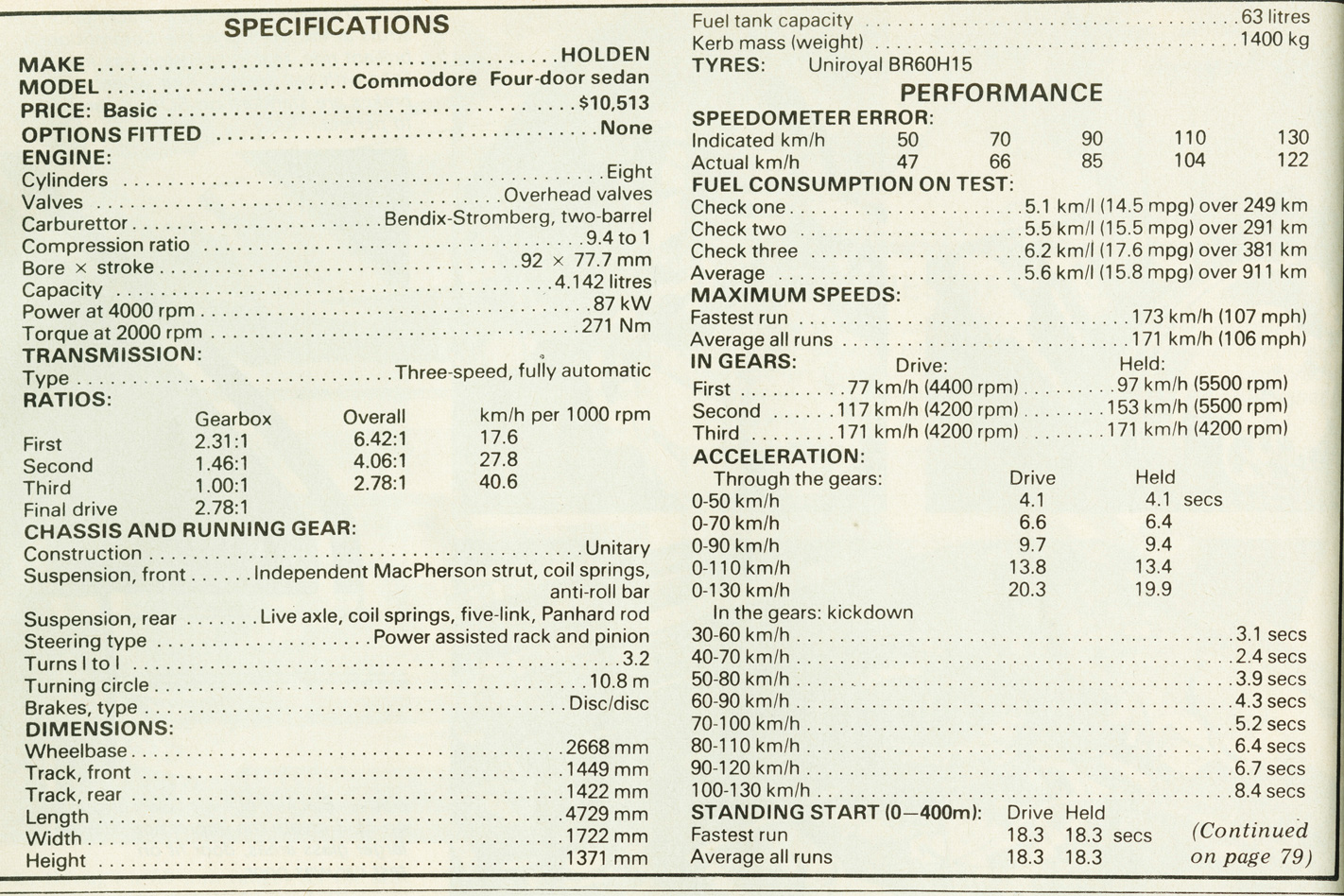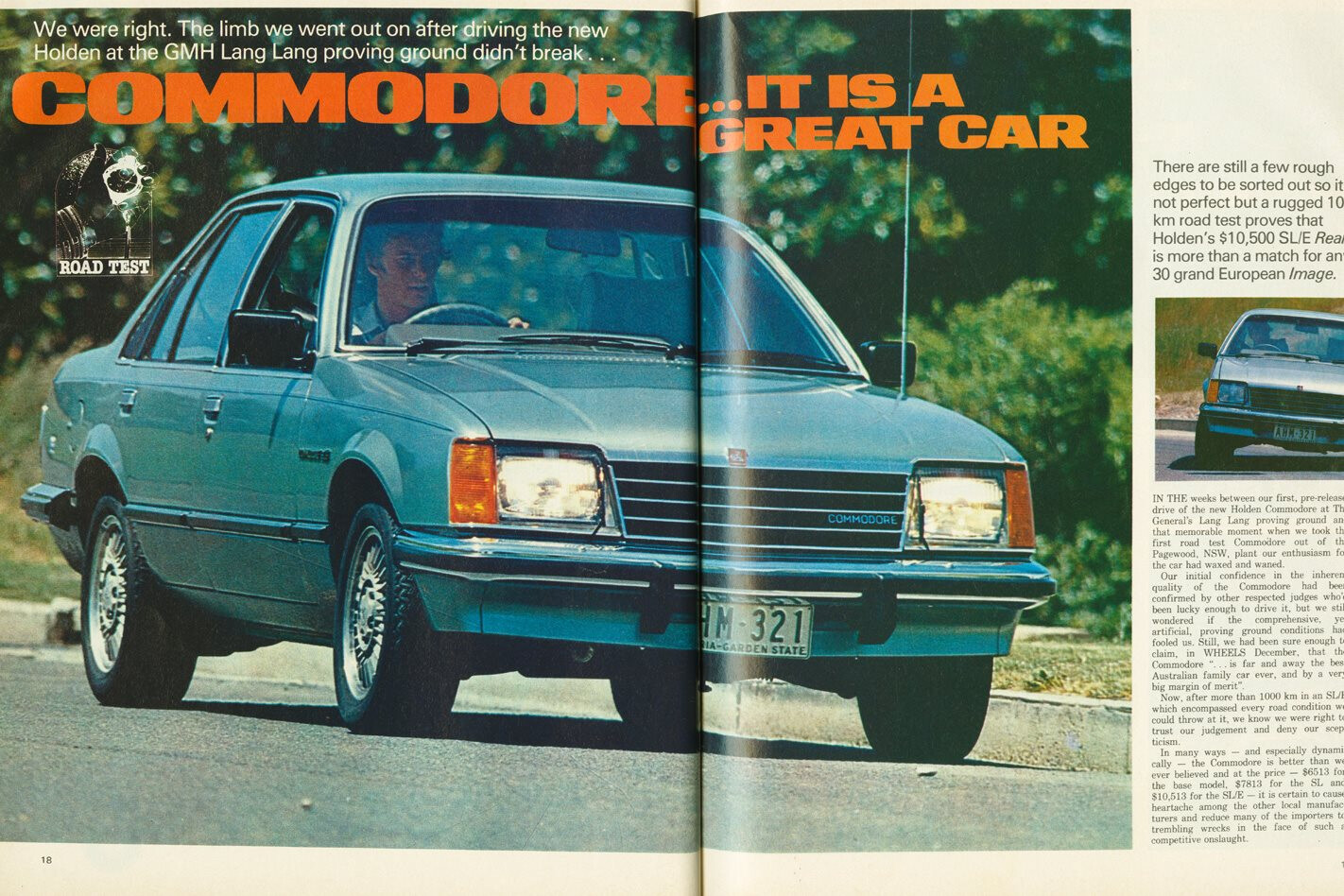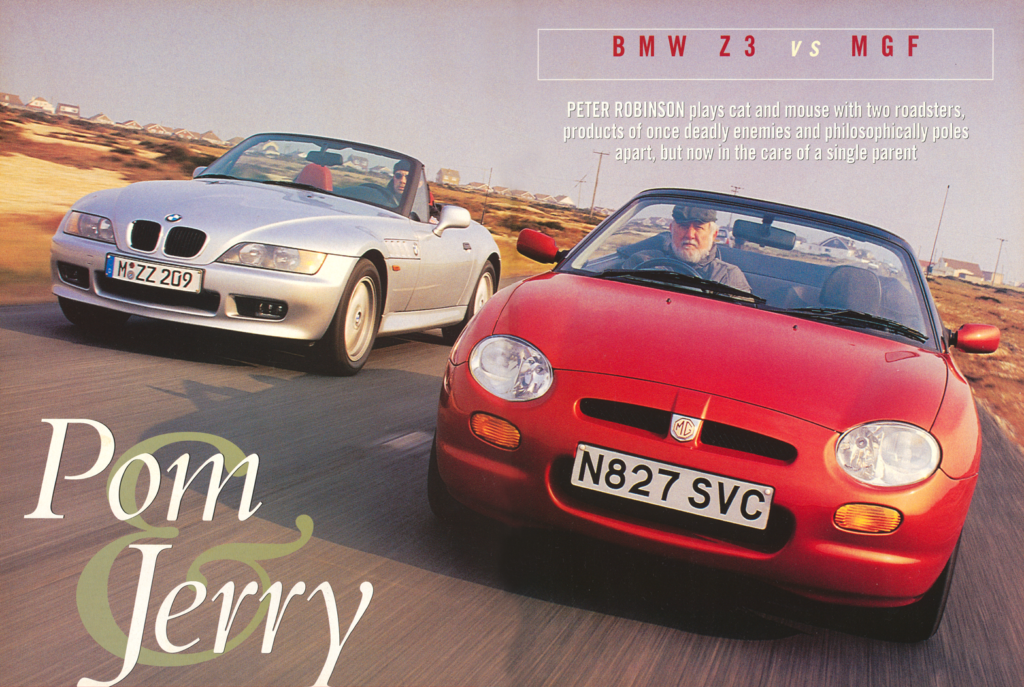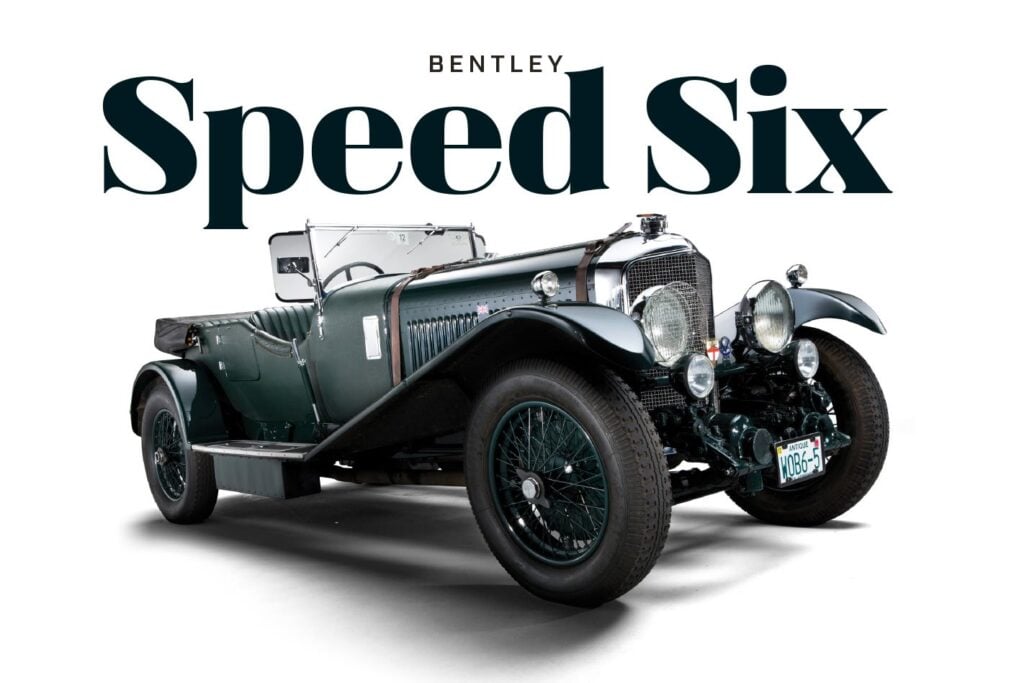There are still a few rough edges to be sorted out so it’s not perfect but a rugged 1000 km road test proves that Holden‘s $10,500 SL/E Reality is more than a match for any 30 grand European Image.
First published in the January 1979 issue of Wheels Magazine, Australia’s most experienced and most trusted car magazine since 1953
IN THE weeks between our first, pre-release, drive of the new Holden Commodore at The General’s Lang Lang proving ground and that memorable moment when we took the first road test Commodore out of the Pagewood, NSW, plant our enthusiasm for the car had waxed and waned.
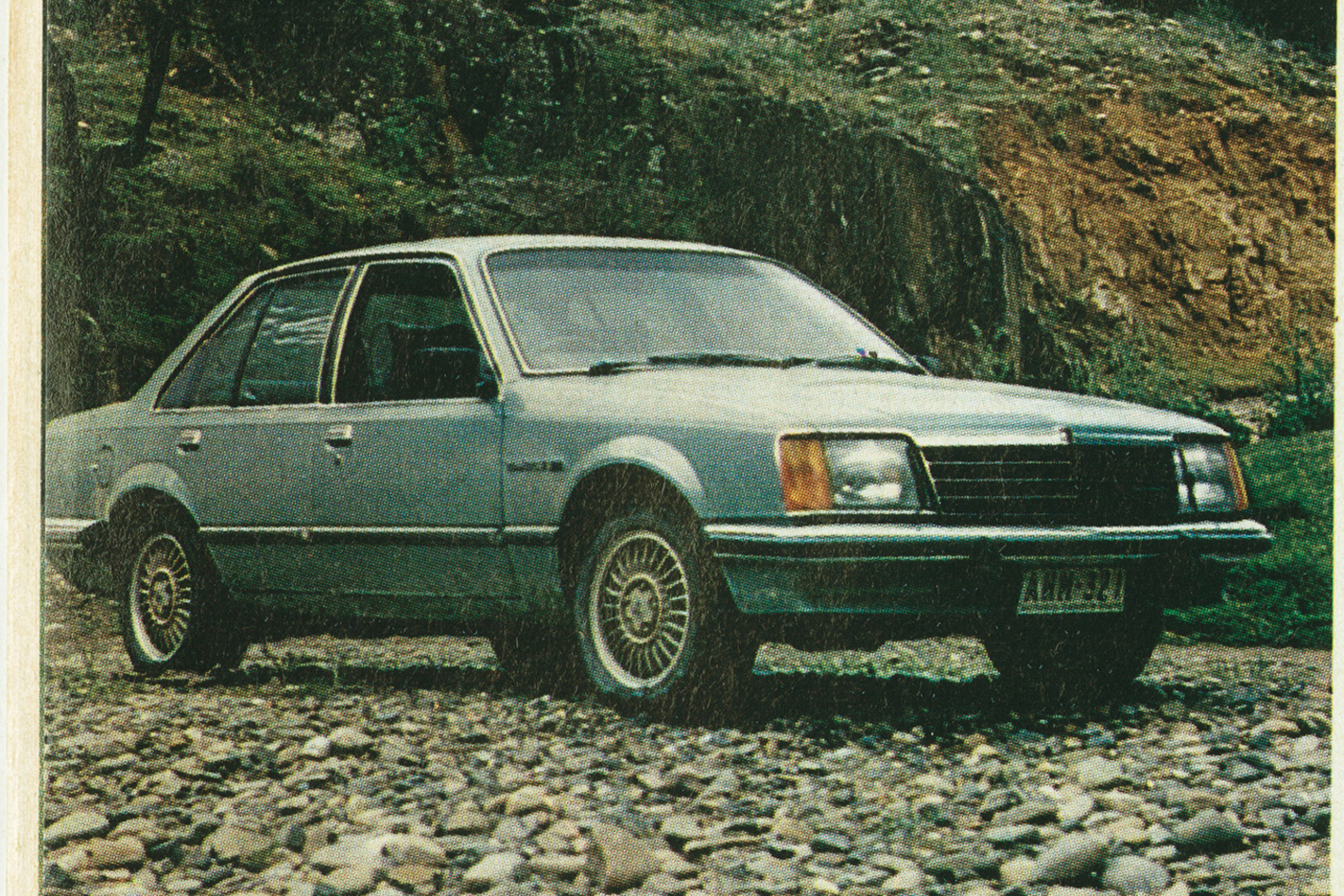
Still, we had been sure enough to claim, in WHEELS December, that the Commodore “is far and away the best Australian family car ever, and by a very big margin of merit”.
Now, after more than 1000 km in an SL/E which encompassed every road condition we could throw at it, we know we were right to trust our judgement and deny our scepticism.
In many ways – and especially dynamically – the Commodore is better than we ever believed and at the price – $6,513 for the base model, $7,813 for the SL and $10,513 for the SL/E – it is certain to cause heartache among the other local manufacturers and reduce many of the importers to trembling wrecks in the face of such a competitive onslaught.
The Commodore has a few faults, some of them serious enough, to give the others a little hope for the future, but because it raises, in so many fundamental ways, the standards of cars that everyman can afford we welcome it as the beginning of a new era in local cars. We had asked GMH to supply us with an SL for our first test of the Commodore but in the rush to organise the first road test car delivered to an Australian publication we ended up with an SL/E – a standard SL/E but still the top-line model complete with 4.2-litre V8 engine, automatic transmission, power steering, four wheel disc brakes and cassette-radio.
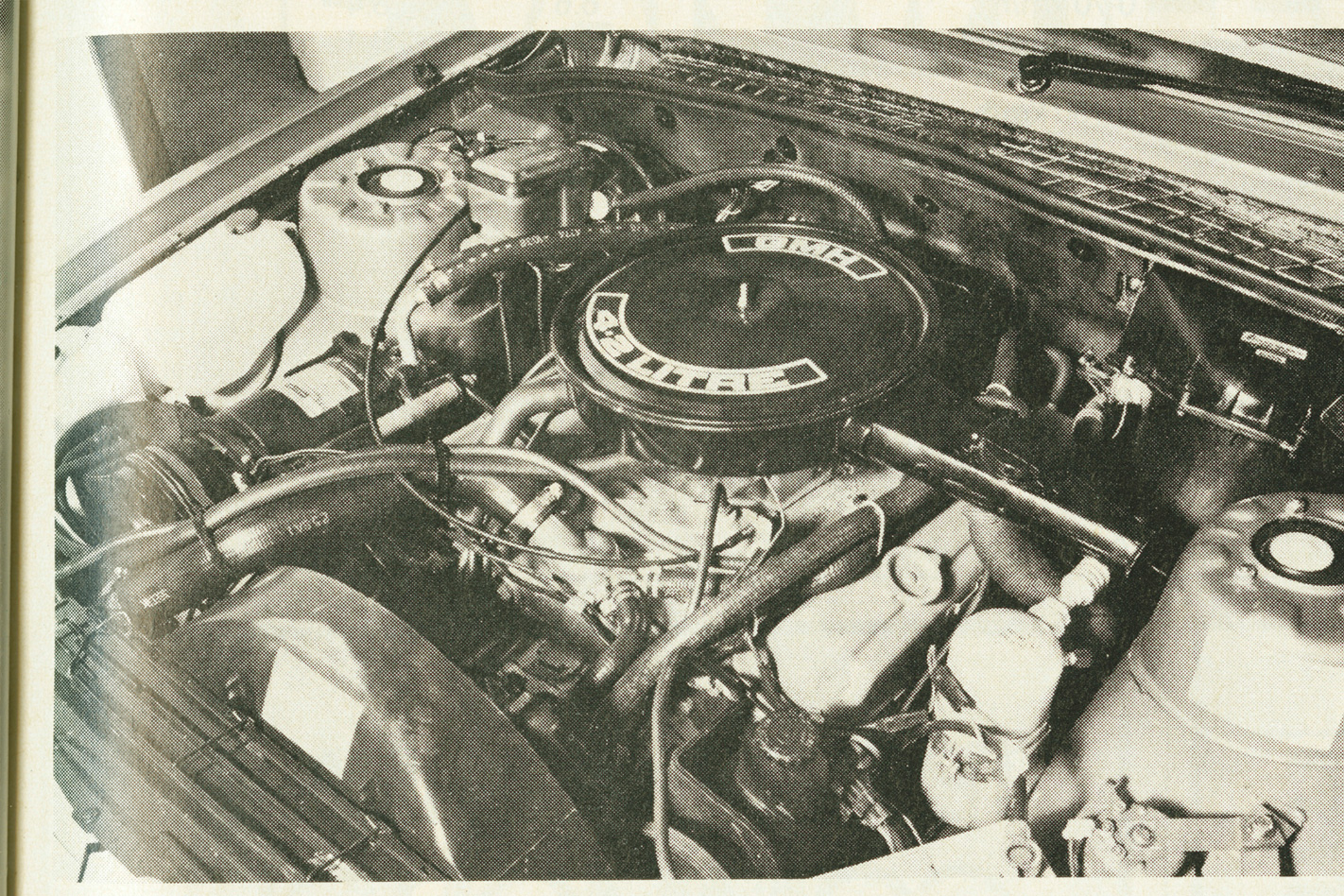
After a saturation advertising campaign and a mountain of mostly highly favourable press column inches, most Australians must be aware that the Commodore is The General’s middleweight contender, sized midway between the Torana and the Kingswood. The more interested will also know of its German origins.
From the overwhelmingly enthusiastic response to our test car, which was on the roads nearly three weeks before the car officially appeared in dealers’ showrooms, the general public liked the car even if they found it hard to accept that it really was Holden and not a BMW.
Although our test was conducted before the massive advertising effort most people knew the Commodore was an additional model in the Holden range and that it was very different to Holdens of old. We got the impression they expected a lot of the first “different” Holden after years of the same old theme. Few, if any, expressed disappointment in what they saw. As one man said, ”The Germans design good cars, don’t they?”
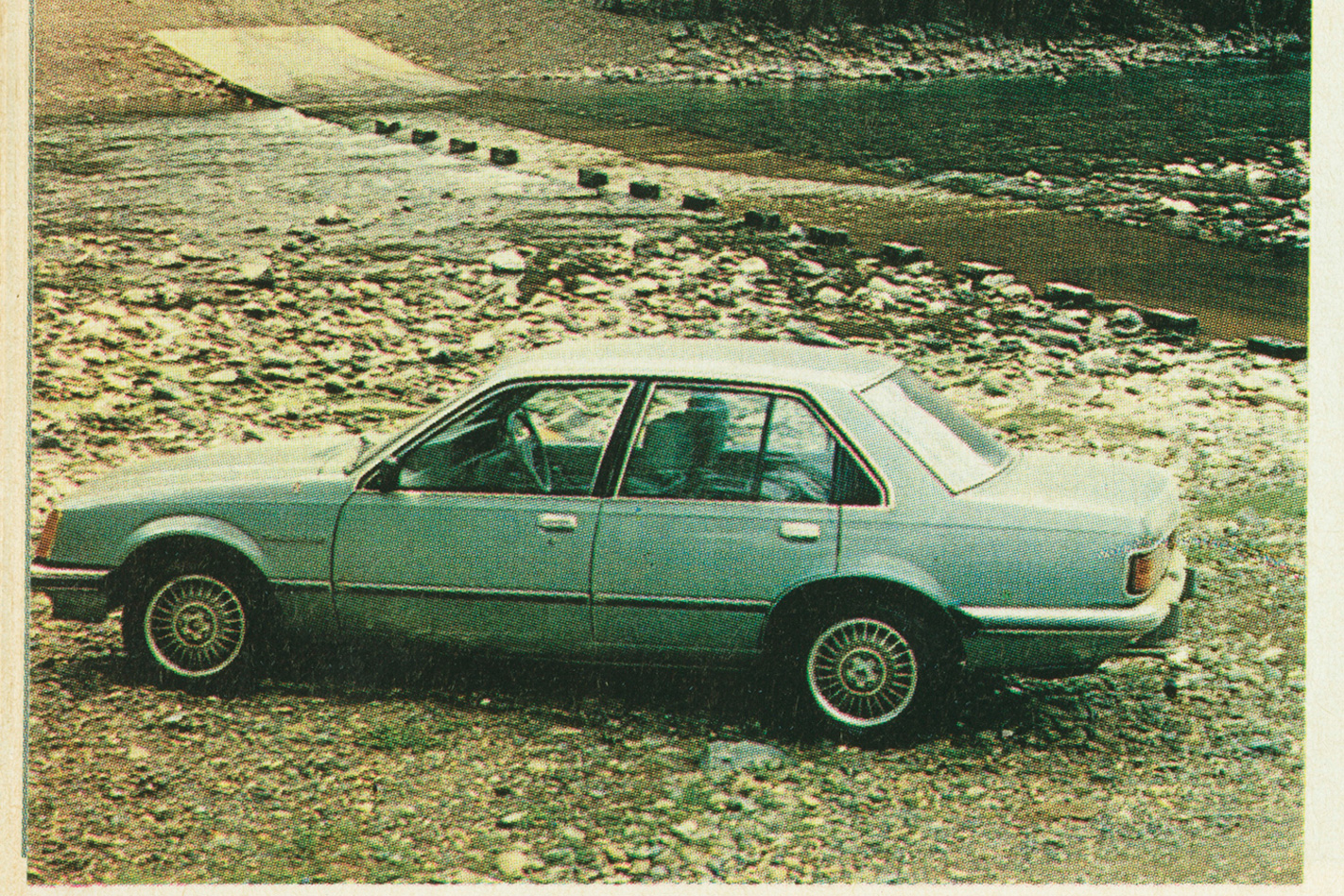
We think the Commodore’s styling works very well with its ultra-low waistline, flared guards, wrap around combination lights, sloping nose, deep glass areas, mildly curved but sweeping windscreen and raised bootline.
It ‘looks bigger in dark colors and perhaps a little narrow from the tail on. Surprisingly, only small lion badges on the bonnet and boot tell you it is a Holden; the emphasis is definitely on the Commodore theme. Most of the early build cars we examined displayed a most un-Holden-like fit of the panels. On the test SL/E the fit of the rear doors was poor and the gap between the trailing edge and the body was inconsistent. Dust had worked its way past the rubber seals although it hadn’t come into the cockpit.
Adjustment at the striker plate should eliminate this problem. We also noticed that the seam between the front fender and the base of the A-pillar was poorly matched and gave the impression of being hand-finished, that the line-up of the doors was irregular and that over rough roads the wide body rubbing strip, which is held on by plastic retaining clips, shook loose.
Okay, so they were early production Commodores and we’ve been assured quality will improve after the Christmas closedown when manufacturing modifications will be made, but it would be a tragedy if poor panel fit cost the car a reputation it didn’t deserve.
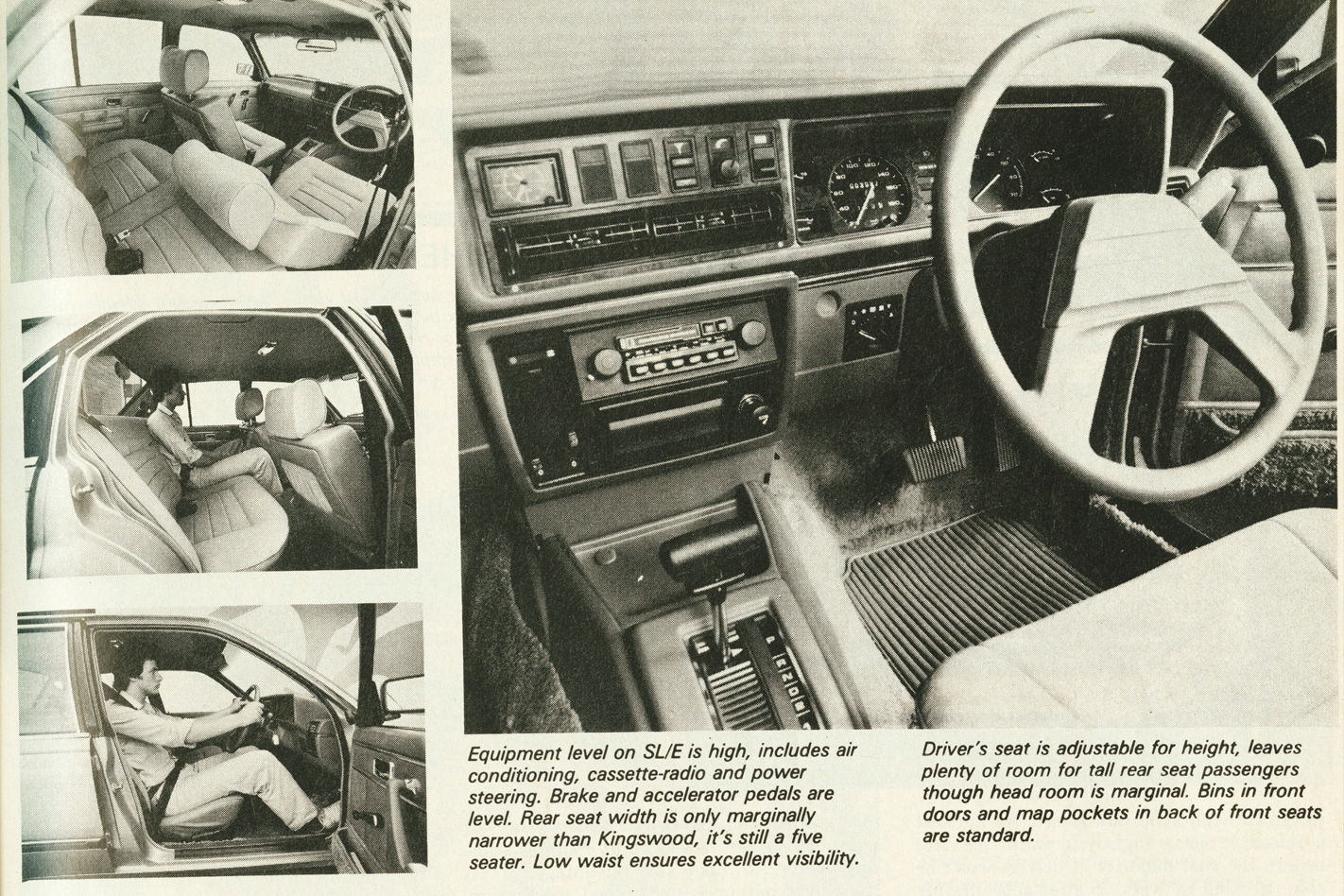
Strangely, it is likely to be tall front seat passengers who complain about a lack of leg room. Holden’s unique steering wheel – in design it is a little like the wheel found on the new Rover 3500 – is perfectly placed, our only criticism is that the horn is hard to find and requires the driver to move one hand from the wheel rim. The horn is operated by pushing the top two-thirds of the wheel boss but it takes a fair pressure and is going to catch many drivers out. It might be a very sensible idea if GMH dealers are instructed to show Commodore buyers where and how the horn works.
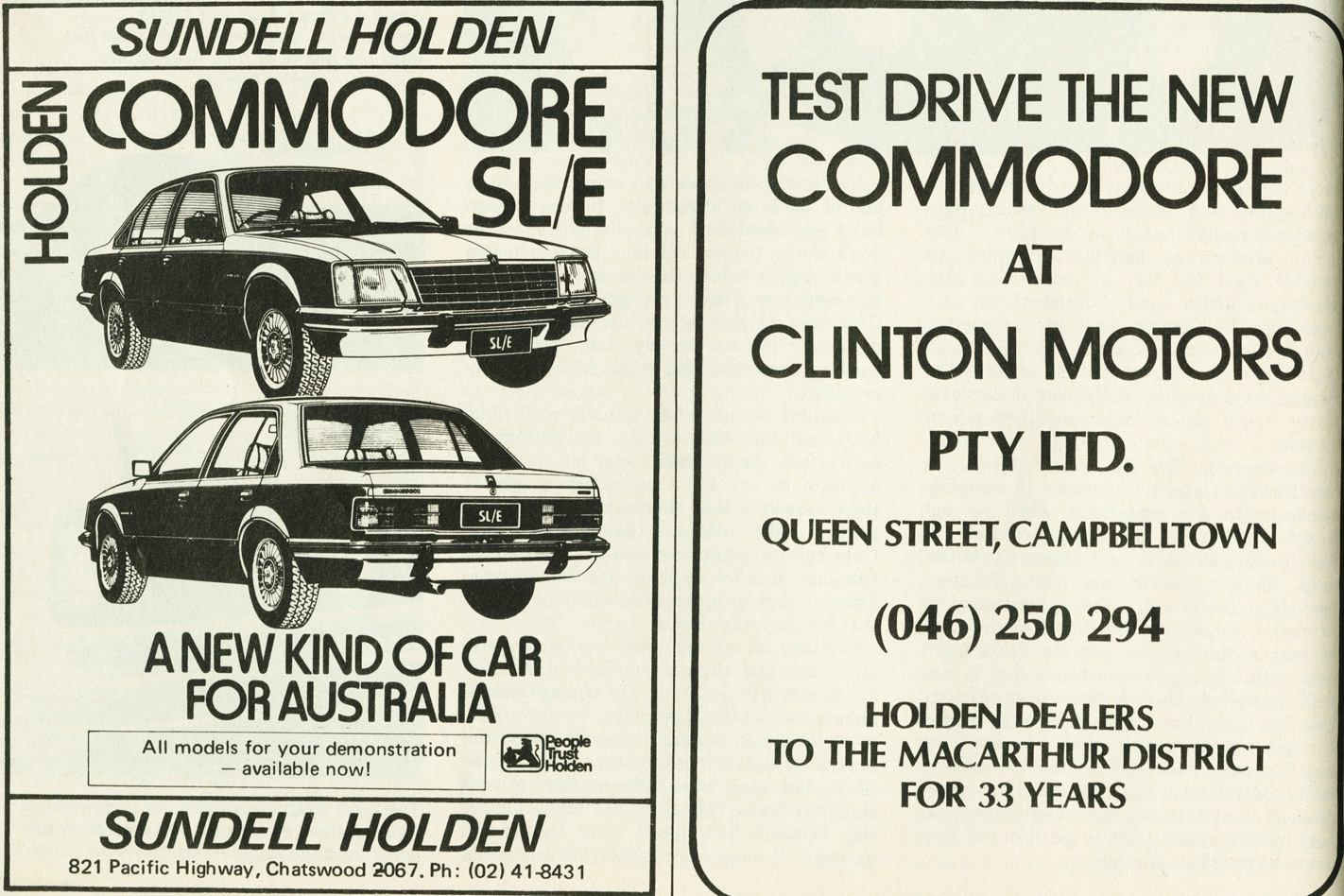
GMH’s rather large and slightly awkward twist steering column stalk for turn indicators, headlight flashers and wipers/washers is carried over from the Kingswood. All other controls – apart from a small switch for the hazard flashers – are located on the dashboard. Lighting is soft but effective in BMW-like style and all the controls are lit. Yes, this really is a Holden!
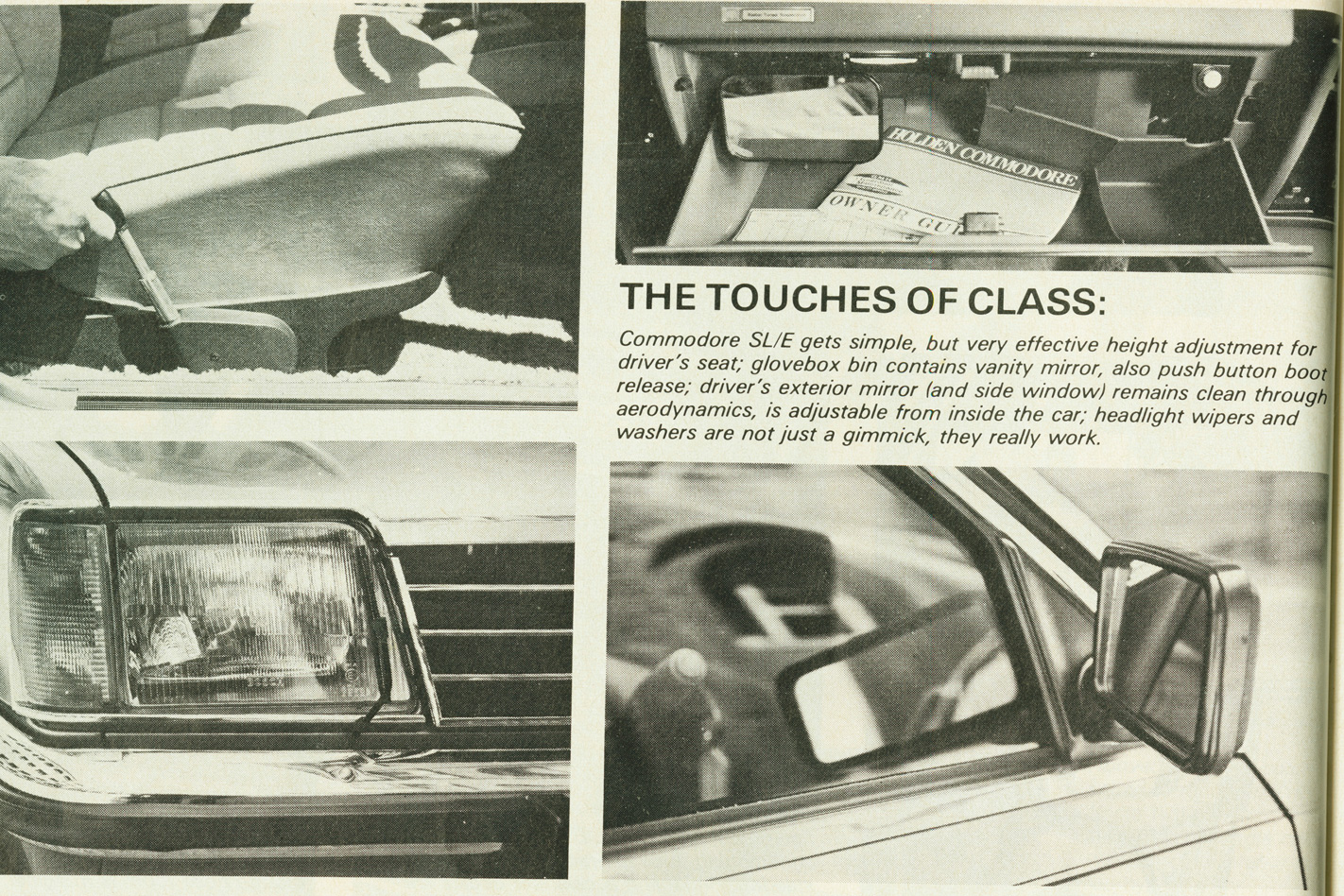
There are small shallow bins on the console and the SL/E also has large pockets in each front door. The glove box is more of a plastic bin and is quite roomy. There’s a useful tray on top of the dashboard in front of the passenger. Both external mirrors are adjustable from inside the car and GMH’s claim that the side windows remain clear was verified after both long dusty and drizzly drives. Visibility is excellent.
No, it doesn’t have the incredibly thin A-pillars of the HQ-HZ but the windscreen is very deep, the bonnet short and sloping away and the wipers clear all but a tiny portion of the glass. By using the height adjustment, it is possible for drivers of more than average height to see the extremes of the boot – how long is it since you could say that about a Holden?
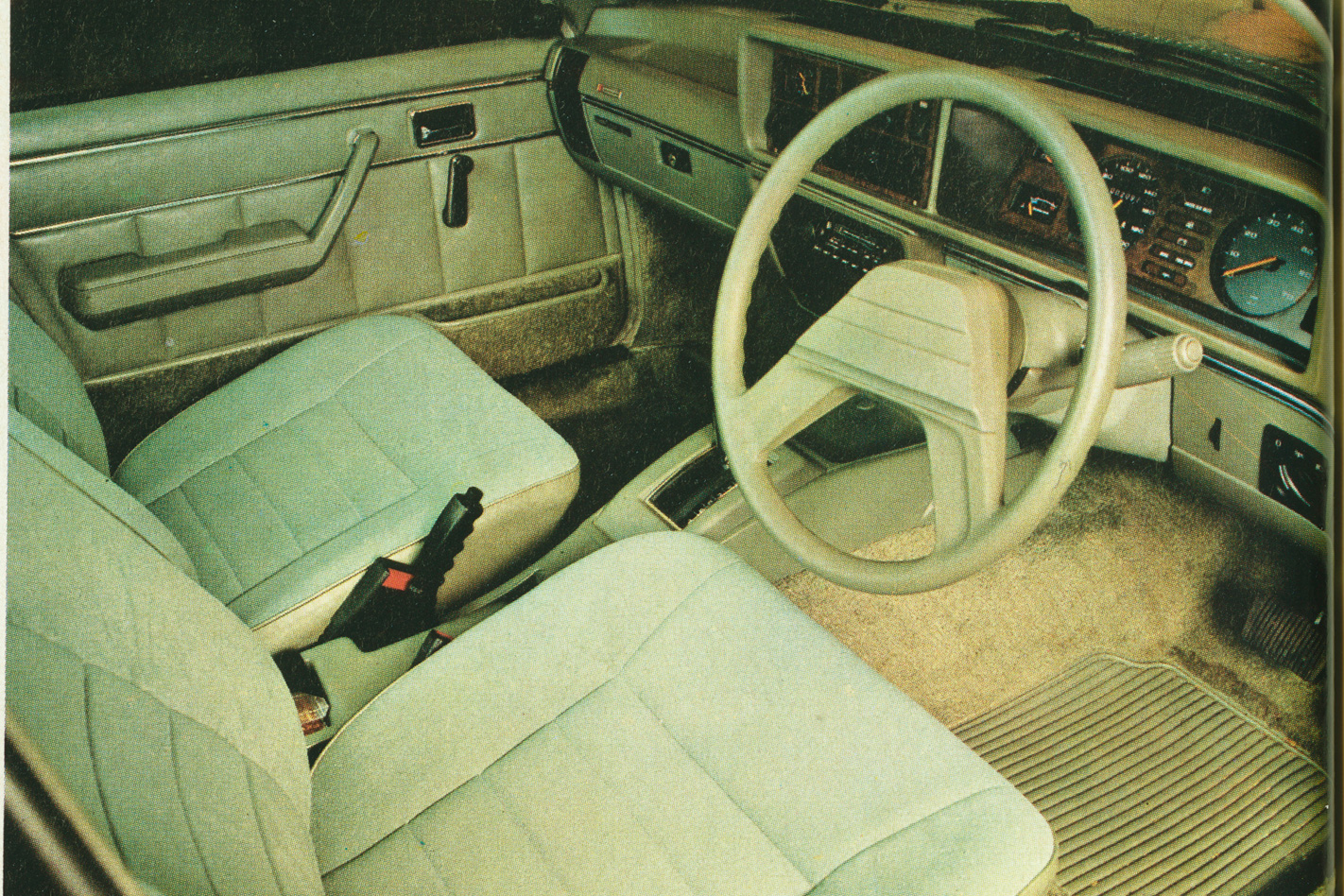
Rear seat leg and knee room are excellent, brilliant even, considering the car’s wheel base. Space efficiency really does mean something in the Commodore.
Interior finish was of a higher standard than external, nothing rattled and although the two coat hooks in front of the rear grab handles fell out we could find nothing to criticise unless you take exception to the rather drab and all-dominant color-keying of the interior.
So the interior package works very well and belies the car’s exterior dimensions. Those people who believe the Commodore will kill off the Torana rather than the Kingswood on the basis of interior room are going to be proved quite wrong.
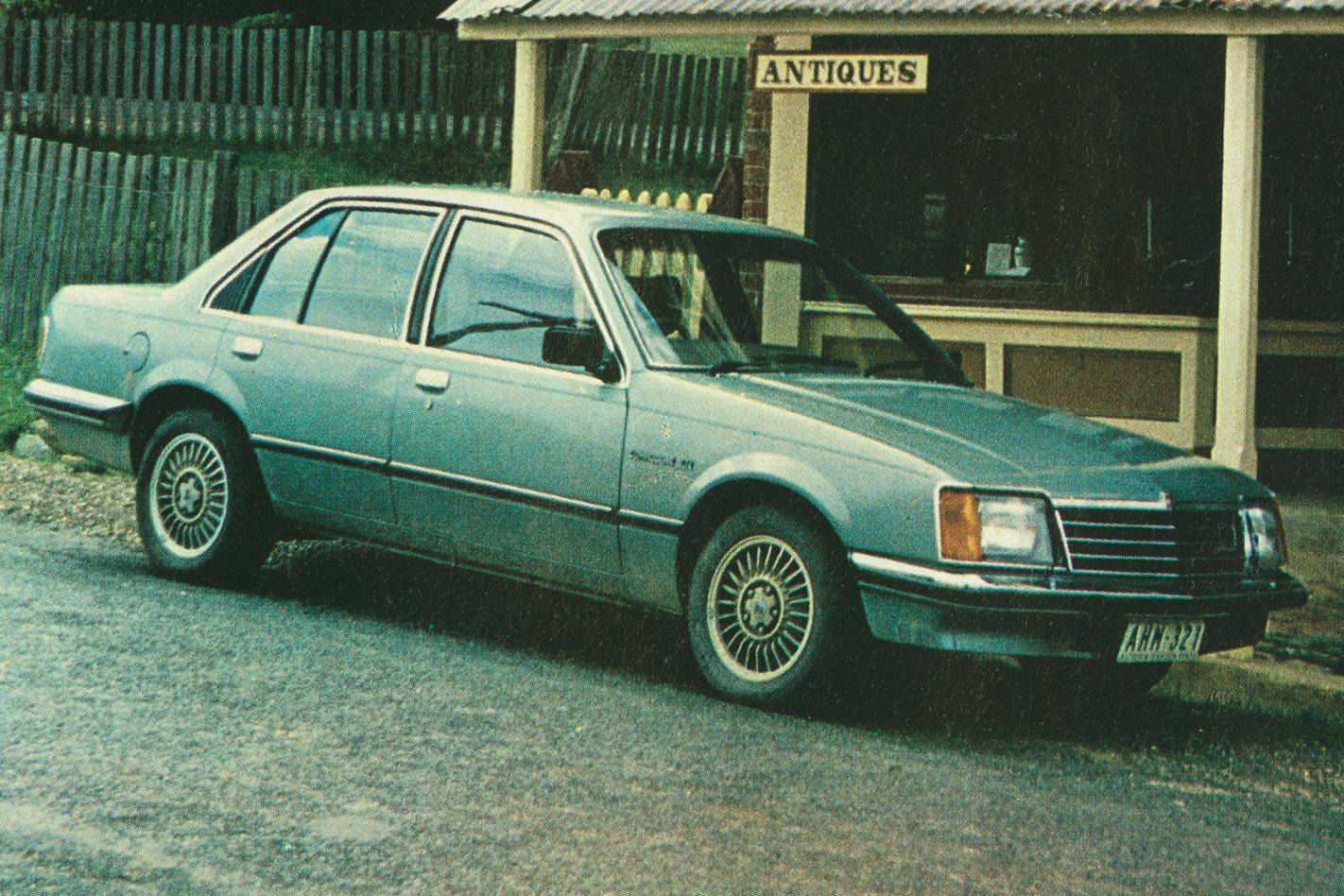
The 4.2-litre V8 starts easily after turning over a couple of times. It idles reasonably smoothly and sounds remote from the cockpit although there is a mild jiggle to tell you it is working. Acceleration is brisk off the line and is somehow rather contradictory. The Commodore doesn’t feel to be accelerating particularly quickly – certainly the times we took are only average for a car of this engine capacity (standing 400 metres in 18.3 seconds) and weight – but it reaches high speeds so effortlessly and can maintain them so easily that it is deceptively fast.
The steering is perfectly weighted to provide good feel for the driver. It’s also precise, smooth and consistent in its behaviour. The turning circle is 10.8 metres and there are only 3.2 turns lock to lock, so it is high geared but not so high as to require concentration in the way of the new Rover which has a similar rack and pinion system.
The steering, like the rest of the car, is beautifully balanced and works in complete unison with the suspension. Opel – and hence Holden – made the switch to MacPherson struts to give improved control over damper movements and therefore provide a better ride. The improvement is dramatic for the Commodore has the kind of supple ride of the very best European cars with long suspension travel that is also well controlled.
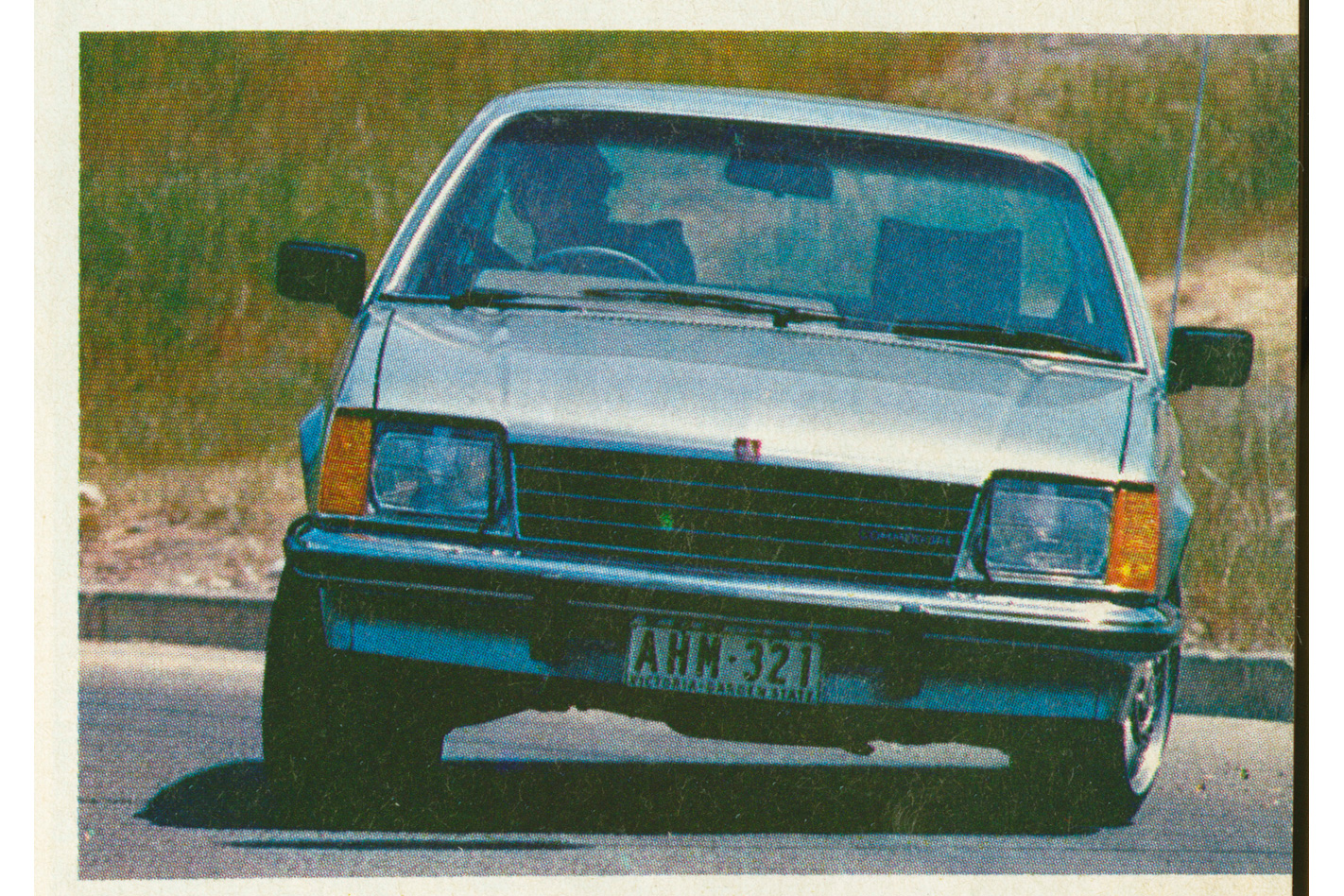
Side winds have virtually no effect. Handling is understeer initially with some body roll but this can be neutralised so easily by the throttle that it is more accurate to say the Commodore is one of those rare cars that simply goes where it is pointed. The ultra-low profile 60 series Uniroyal tyres provide very high levels of adhesion and few will be the drivers who discover that in ultimate terms it is the tail that breaks away first.
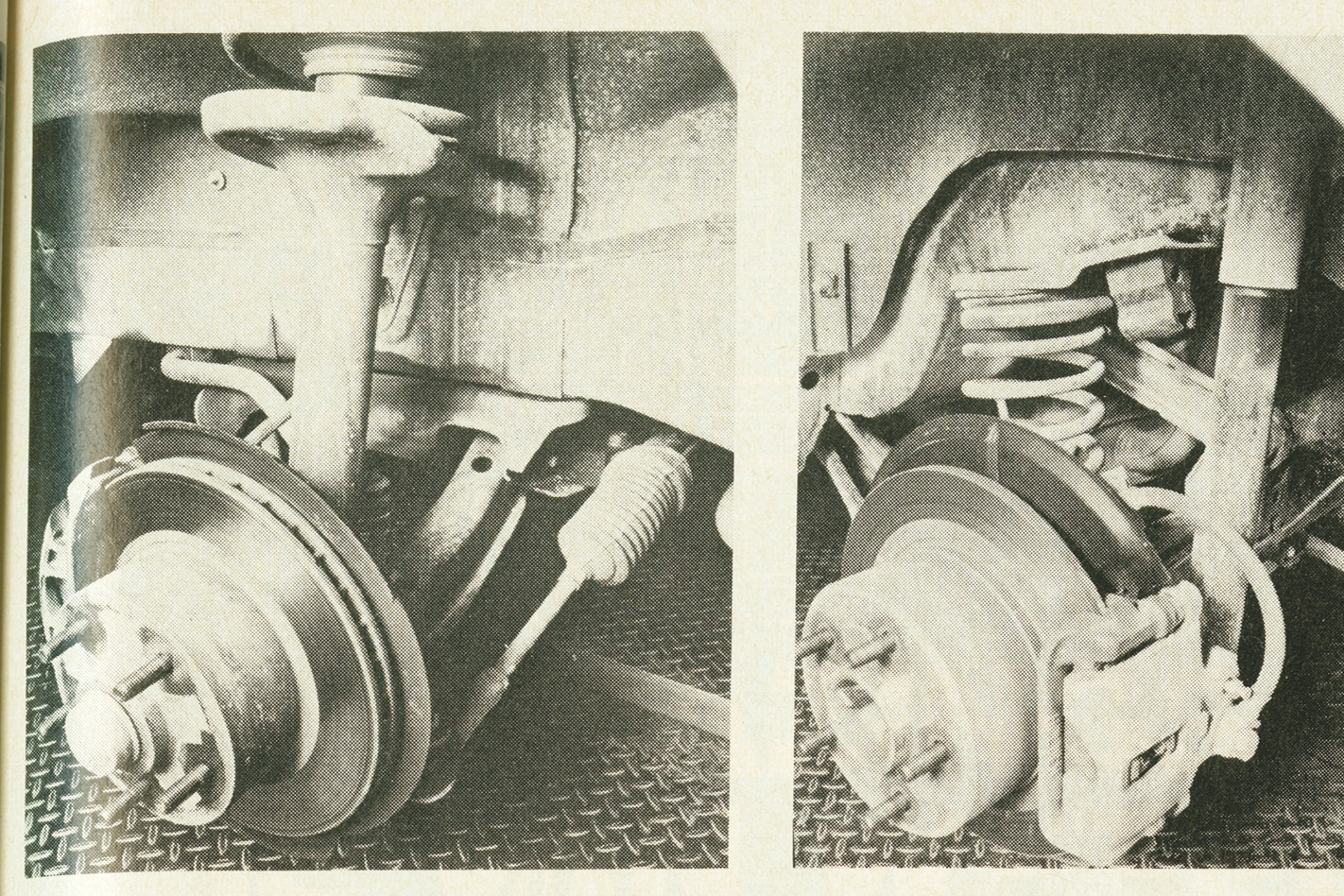
The brake pedal is very European in feel with just the right amount of servo-assistance to provide a progressive pedal. Even the brake pedal height is identical to that of the accelerator. Yes, we too have to keep pinching ourselves that this is a Holden.
Okay, so it’s not perfect but what are the car’s faults apart from the poor panel fit?
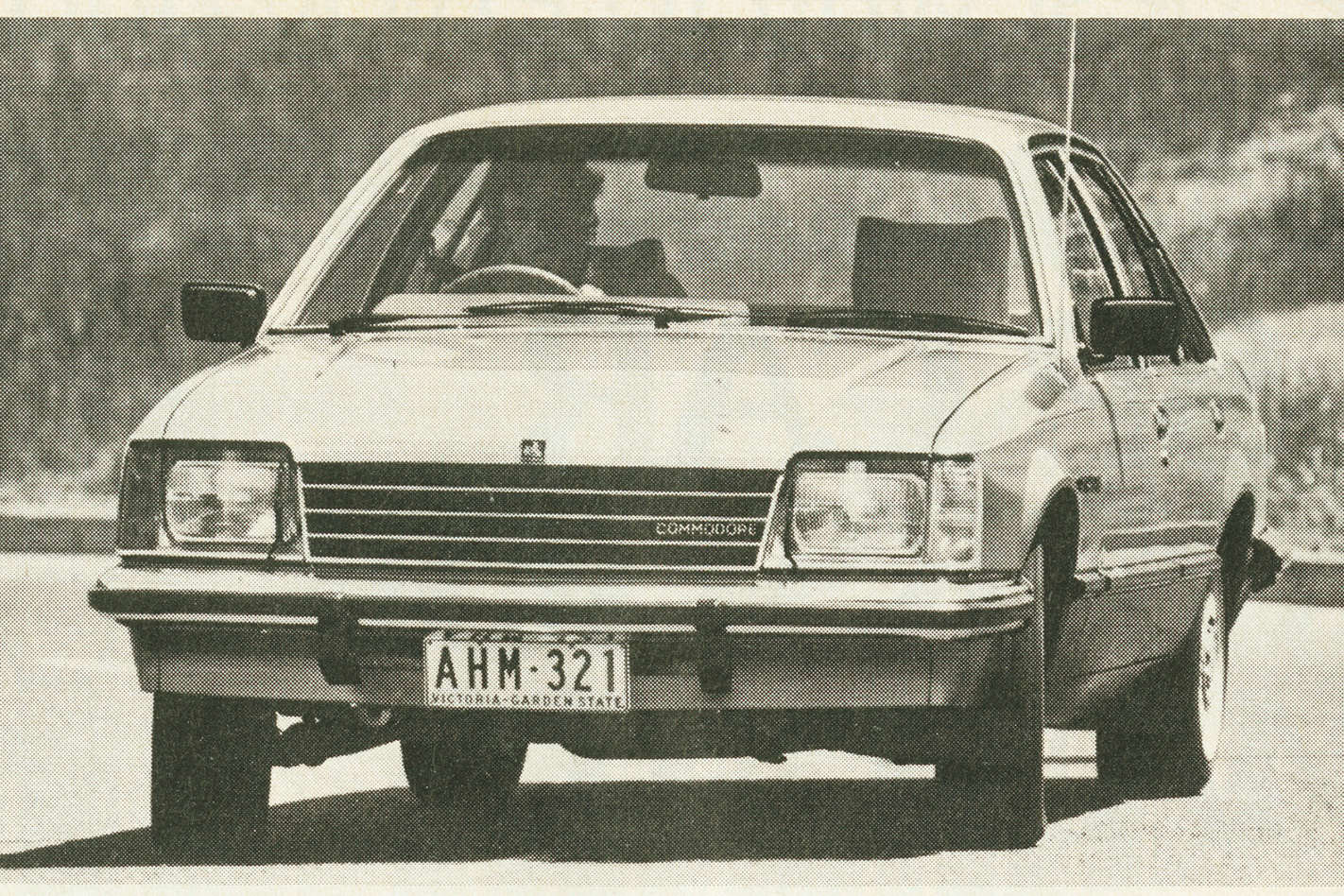
A fuel gauge which reads empty when there is still 10 litres of fuel left means the effective touring range is only between 250 and 300 km. With the Commodore’s mile-eating abilities, this is far too short. The 4.2 engine also idles inconsistently from 700 rpm to 1200 rpm depending upon whether it is in D or N or with the air conditioning on or off.
So our first test of the car only confirms our initial belief that here is a car of exceptional ability. Certainly the fuel consumption is disappointing. At this stage it is idealistic to talk about how it would be with a small high revving three-litre V6 so let’s not enter that argument as it’s another story entirely.
Today’s Commodore is smooth, relaxing, effortless, comfortable, a pleasure to drive with standards of dynamics that other Australian cars haven’t dreamt about. Get the minor problems cured and those people who buy a 30 grand European can only justify it on the grounds of image… not superiority.
